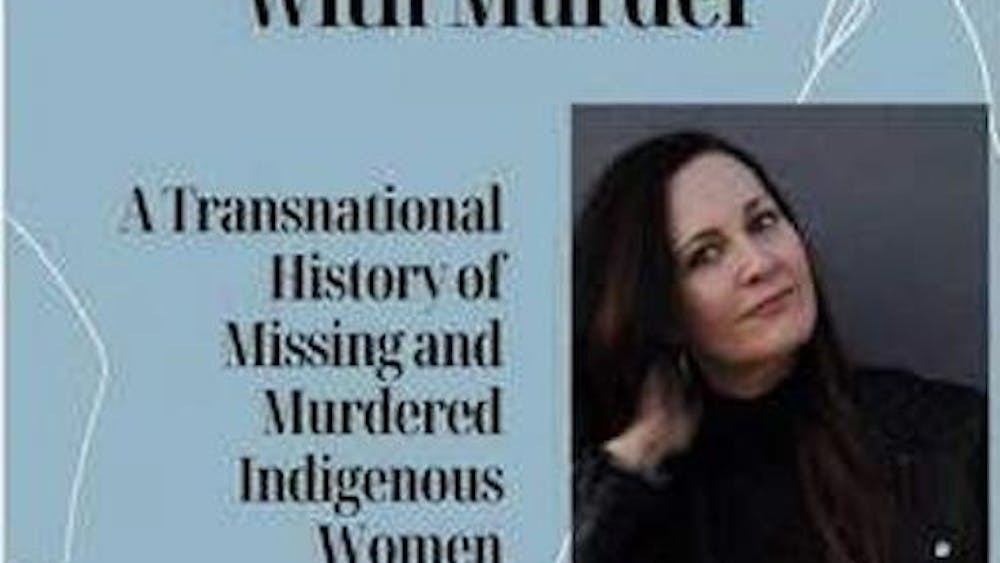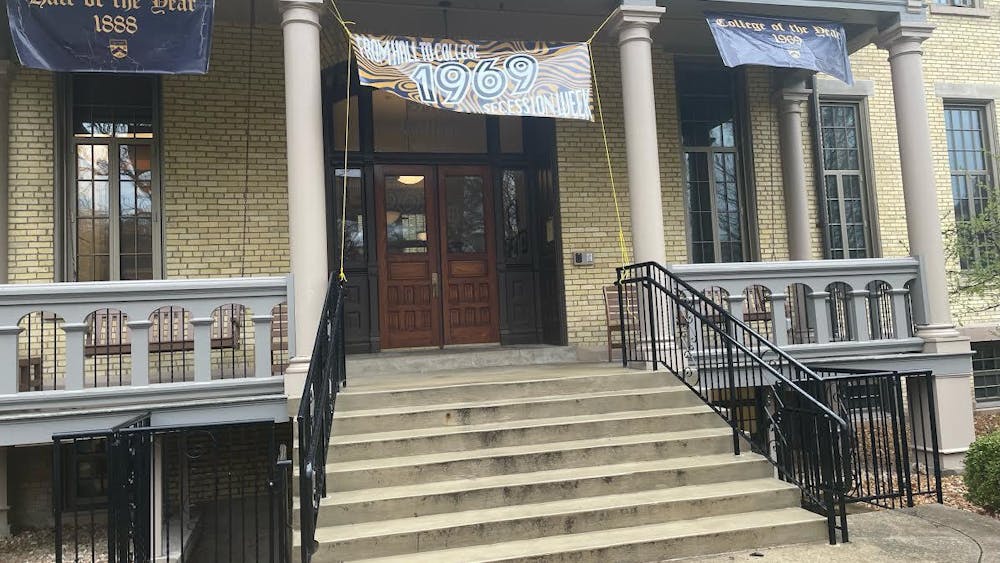Four hundred years ago, in 1616, William Shakespeare died. As his legacy, he left behind 37 plays and more than 150 poems that still capture the attention of modern readers. In celebration of the 400th anniversary of the Bard’s death, the Folger Shakespeare Library is allowing a few of its 82 copies of the First Folio to tour the U.S., and Notre Dame was selected as Indiana’s only host site.
“There was a gigantic campus-wide effort here with Shakespeare ND, Rare Books and Special Collections, Hesburgh Libraries and the important people over in the Dome, who recognized this would be a wonderful opportunity given Notre Dame’s tradition with Shakespeare and the performance that happen every year and Shakespeare ND,” Julie Tanaka, curator of special collections, said. “We made a sales pitch for why we were interested and why we were a good host site, and we were selected as the site in Indiana to host.”
The First Folio contains 36 of Shakespeare’s plays. Tanaka said Shakespeare was one of the first English dramatists to have his work published as a folio.
“A folio is when you take a piece of paper, and you fold it in half; Shakespeare’s plays previous to this — 19 of them had been printed — were published in what are called ‘quarto,’ where a piece of paper is folded into fourths,” she said. “Those were meant to be passed around, read and discarded, so they were printed on cheaper paper, kind of like a newspaper. The folio was reserved for important works. They were reserved for government documents, theological treatises, some high literary things.”
Shakespeare’s First Folio is especially crucial because without it, 17 of his plays — including “Macbeth,” “Measure for Measure” and “Julius Caesar” — may have been lost forever.
According to Tanaka, Henry Clay Folger, an oil mogul, started a “buying spree” of Shakespeare’s First Folios in the late 1800s. Approximately 750 were printed in 1623. Today, the locations of 233 are known; 82 of them are at the Folger library, making it the largest collection in the world. The second largest, in Tokyo, Japan, has 12.
“This is one of the 82 copies the Folger Library holds. It’s opened to the famous soliloquy in Hamlet, ‘To be or not to be.’” she said. “It’s printed in two columns and there are approximately 900 pages in this volume. It’s easier to read that way.”
Folger spent anywhere from a “couple hundred” dollars to around $68,000 for each of his folios, depending on the quality and condition. According to Tanaka, the folios would cost between $5 and $6 million, based on the last two sales in 2006 and 2008.
“This [particular one] came from Washington D.C. It was packed up in a nice container with other wrappings around it, not only to protect it, but to allow it to adjust to the different climates as it came out here, slowly,” she said. “When you have a book like this, and you go from 80 degrees to 12 degrees, it puts a lot of stress on the book itself, and it causes the binding to do funny things, so the book wouldn’t last another 200 years. It was unpacked, allowed to adjust to our climate and then put into display in a case.”
Two of Shakespeare’s friends and fellow actors in the King’s Company helped compile his plays for the folio. While 19 had been previously printed, Tanaka said there’s some “sketchiness” regarding the remaining 17 and how they were included, since accounts are vague and few.
“That adds to the charm of Shakespeare,” Tanaka said. “There are some things we’ll never know, and it lets you imagine things. That’s what’s nice about his plays too. They’re written for an audience not only for the 17th century, but the 21st century as well. There’s something in all of his plays that appeals to everyone. You can see them performed as we think it happened in the 17th century, or you can see how it’s reinterpreted for the 21st century, in very loose terms. You can see a combination of both, in movies, in comic books, in literature.”













